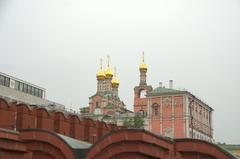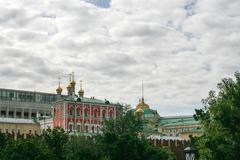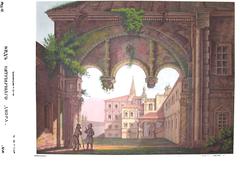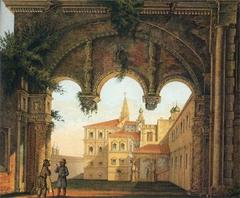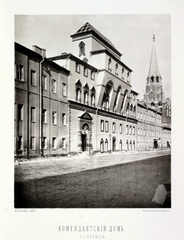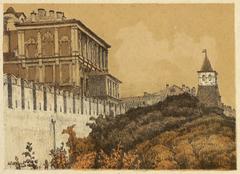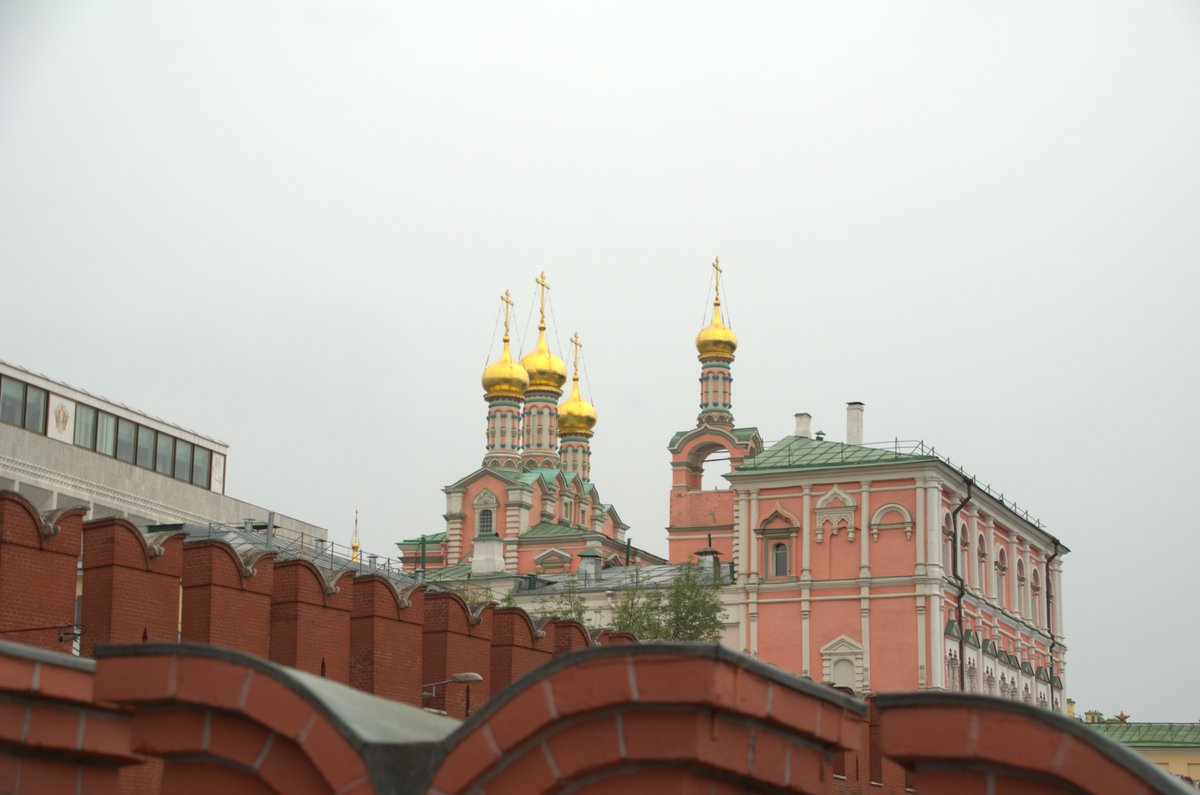
Amusement Palace Moscow: Visiting Hours, Tickets, and Historical Sites Guide
Date: 14/06/2025
Introduction
The Amusement Palace (Poteshny Dvorets), nestled within the iconic Moscow Kremlin, is a remarkable symbol of Russia’s cultural and architectural evolution. Constructed in the mid-17th century, it uniquely merges residential, theatrical, and religious functions, serving as the birthplace of Russian theatre and a royal venue for courtly amusements. This guide provides comprehensive insights into the palace’s history, architectural significance, practical visitor information (including visiting hours and tickets), accessibility, and nearby attractions—ensuring you have everything needed for an enriching visit to one of Moscow’s most treasured historical landmarks (Advantour; Rusmania; Wikipedia; Kremlin Architectural Ensemble).
Table of Contents
- Introduction
- Origins and Early Development
- Architectural Significance
- Socio-Cultural Role
- Transformation During the Soviet Era
- Post-Soviet Revival and Modern Use
- Visiting Hours, Tickets, and Accessibility
- Special Events, Tours, and Photography
- Visitor Tips
- Nearby Attractions
- FAQs
- Conclusion
- References
Origins and Early Development
The Amusement Palace’s origins date to 1651–1652, when it was built for Ilya Miloslavsky, the father-in-law of Tsar Alexei Mikhailovich. Its design reflects a pivotal moment in Russian architecture, blending medieval traditions with emerging Baroque influences. The palace’s square plan, central archway, and enfilade of rooms echo the nearby Terem Palace, while its integration of the Church of the Praise of the Virgin is unique. After Miloslavsky’s death, the palace was transferred to the Tsar’s treasury and soon transformed into a theatrical venue, marking the advent of Russian court theatre (Kremlin Architectural Ensemble; Advantour).
Architectural Significance
The palace exemplifies 17th-century Russian architecture with its:
- Red brick construction and white stone detailing, harmonizing with the Kremlin’s walls.
- Symmetrical layout and modest ornamentation, displaying the transition from medieval austerity to Baroque elements.
- Integration of a private church, with onion domes and machicolation brackets, blending secular and religious spaces.
The original flat roof with a hanging garden was a rare luxury for the time (Kremlin Architectural Ensemble). Restoration projects in the early 2000s returned the façade and church domes to their historical appearance (Spotting History).
Socio-Cultural Role
By 1672, the palace hosted Russia’s first theatrical performances, introducing Western theatre traditions to the Russian court (Wikipedia). Over the next centuries, it adapted to various roles: housing state offices during Peter the Great’s reforms, and later serving as the residence of the Kremlin’s Commandant in the 19th century (Spotting History).
During Stalin’s era, the palace was used as his residence, and it became the site of personal tragedy with the death of Nadezhda Alliluyeva (Wikipedia).
Post-Soviet Revival and Modern Use
Following decades of change, the Amusement Palace was extensively restored between 2002 and 2004. Today, while it remains part of the presidential residence and is not open for regular interior tours, its exterior and historical significance can be appreciated by visitors to the Kremlin (Kremlin Architectural Ensemble).
Visiting Hours, Tickets, and Accessibility
- Visiting Hours: The Kremlin complex, including exterior views of the Amusement Palace, is open from 10:00 AM to 5:00 PM, except Thursdays. Last entry is usually at 4:00 PM. Check the official Kremlin website for updates.
- Tickets: Standard Kremlin tickets (purchased online or at the entrance) grant access to exterior views but not the palace interior.
- Accessibility: Public paths near the palace are wheelchair accessible. The palace interior is not accessible to the public due to security.
- Guided Tours: Specialized Kremlin tours offer historical context and better exterior views. Audio guides and mobile apps are available in multiple languages.
Special Events, Tours, and Photography
- Events: The palace’s exterior can be viewed during special Kremlin events or ceremonies, though access remains limited.
- Photography: Best from Aleksandrovsky Gardens or Kremlin walkways. Use zoom lenses or binoculars for detail shots; winter offers clearer views due to less foliage.
- Guided Tours: English and multilingual tours provide historical background and architectural insights (Advantour).
Visitor Tips
- Arrive Early: Avoid crowds by visiting on weekday mornings.
- Dress Code: Modest attire is recommended for the Kremlin complex.
- Plan Ahead: Book tickets online and check for any special events that may affect access.
- Combine Visits: Explore Red Square, the Armoury Chamber, and nearby cathedrals for a full Kremlin experience.
Nearby Attractions
- Red Square: Home to St. Basil’s Cathedral and Lenin’s Mausoleum (CNN Travel).
- Alexander Garden: Features the Tomb of the Unknown Soldier.
- Armoury Chamber: Showcases royal treasures.
- Cathedral Square: Iconic churches and ceremonial buildings.
Frequently Asked Questions (FAQ)
Can I go inside the Amusement Palace?
No, the interior is closed to the public as it is part of the presidential residence.
How do I get tickets?
Purchase Kremlin complex tickets online or at the main entrance. No separate tickets for the palace.
Are guided tours available?
Yes, book in advance for historical and architectural context.
Is the area wheelchair accessible?
Paths around the palace are accessible; interiors are not.
When is the best time to visit?
Spring to autumn for comfort and gardens in bloom; winter for clearer architectural views.
Conclusion
The Amusement Palace is a distinctive highlight of Moscow’s Kremlin, representing centuries of royal life, religious tradition, and cultural innovation. While interior access is restricted, its history and architecture are accessible through guided tours and exterior views. Combine your palace visit with Kremlin highlights for a memorable, comprehensive experience of Moscow’s historical heart.
For the latest updates, ticket bookings, and exclusive audio guides, download the Audiala app. Follow us on social media for more tips and stories about Moscow’s most fascinating sites.
References
- Advantour – Amusement Palace Moscow
- Rusmania – Moscow Kremlin: Amusement Palace
- Wikipedia – Amusement Palace
- Kremlin Architectural Ensemble – Poteshny Dvorets
- Rough Guides – Moscow Attractions
- CNN Travel – Moscow Attractions
- TravelSetu – Guide to Moscow Tourism
- Express to Russia – Moscow Vacation Guide
- Spotting History – Amusement Palace
- Thrillophilia – Places to Visit in Moscow
- Touropia – Tourist Attractions in Moscow
For the best visitor experience, include images with descriptive alt text, such as “Amusement Palace Kremlin Moscow facade” and “17th-century frescoes inside Amusement Palace.” Utilize interactive maps and virtual tours if available.
